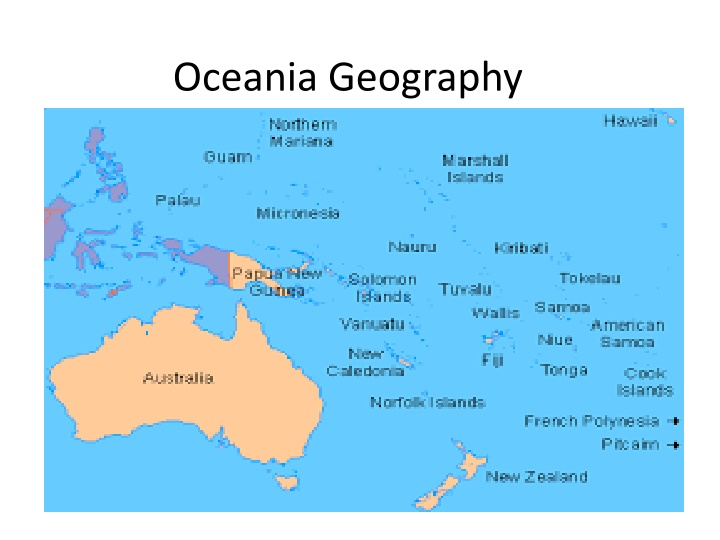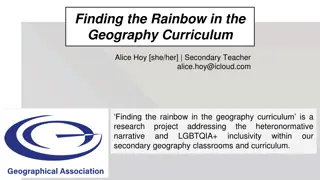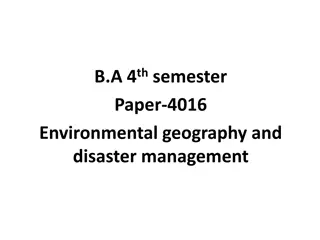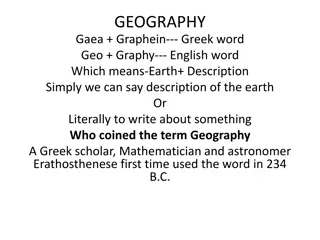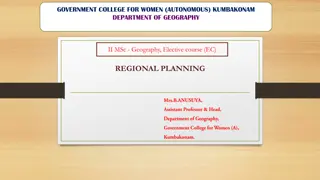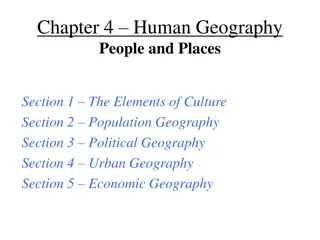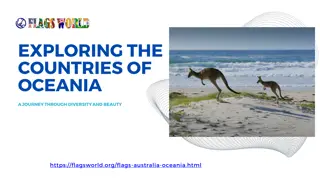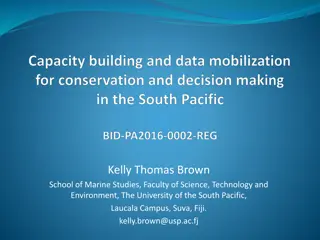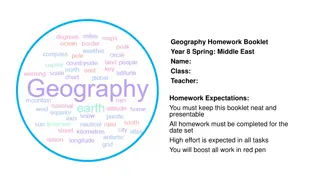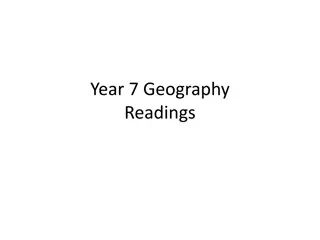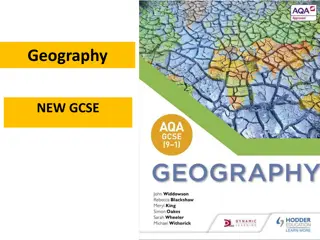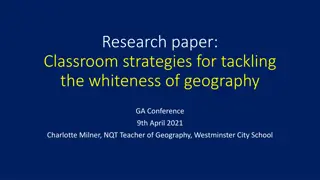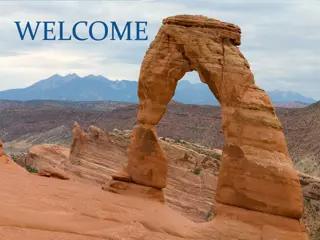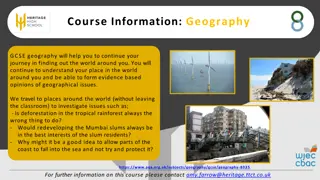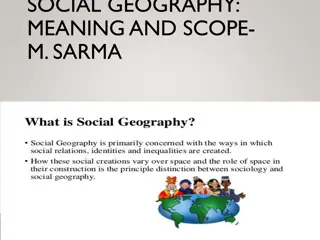Discover the Diverse Geography of Oceania
Oceania is a region made up of thousands of islands with major land areas including Australia, New Zealand, and New Guinea. The physical makeup consists of continental islands, high islands, and low islands. Key landmarks like the Great Barrier Reef and glaciers in New Zealand add to the region's natural beauty. The Australian Outback, a vast desert region, dominates the interior of Australia. The climate varies from warm and humid in Australia to temperate in northern New Zealand, influenced by mountains and the ocean.
Download Presentation

Please find below an Image/Link to download the presentation.
The content on the website is provided AS IS for your information and personal use only. It may not be sold, licensed, or shared on other websites without obtaining consent from the author.If you encounter any issues during the download, it is possible that the publisher has removed the file from their server.
You are allowed to download the files provided on this website for personal or commercial use, subject to the condition that they are used lawfully. All files are the property of their respective owners.
The content on the website is provided AS IS for your information and personal use only. It may not be sold, licensed, or shared on other websites without obtaining consent from the author.
E N D
Presentation Transcript
Physical Geography The region of Oceania is made up of thousands of islands throughout the Central and South Pacific Ocean. The major land areas in the region are: 1. Australia 2. New Zealand 3. New Guinea
Physical Continued The physical makeup is made of 3 landforms: 1. Continental Islands: Land that was once connected to continents before changing sea levels and tectonic activity isolated them 2. High Islands: formed as volcanic eruptions built up over time 3. Low Islands: Made of skeletons and living bodies of small marine animals called coral
Major Landmarks/Areas of Oceania Great Barrier Reef The largest living thing on Earth Found off the northeaster coast of Australia, and covers an area of 132,973 square miles Visible from outer space Home to thousands of reefs, hundreds of islands, and countless species of fish, turtles, sharks, etc.
Glaciers of New Zealand Most glaciers are located near the Main Divide in the South Island of New Zealand Many of the glaciers have been retreating, or melting rapidly since the 1920s Since that time many new, small lakes have been formed
Australian Outback The Outback is a every day word used to describe the vast desert region of Australia The Outback makes up the majority of Australia s interior The arid, harsh environment has been the cause of the decrease in the population of the Outback
Climate Generally, the climate of Australia is warm and humid, very little rain, temps hardly ever dip below freezing, and often there is drought New Zealand s climate is influenced by mountains and the ocean The northern area of the country is temperate (Polar by the glaciers), and tropical to the south ****REMEMBER- this region has opposite weather as we see in America. There warmest times are during winter months and their coldest are in the summer months******
Population The population is currently 38 million people Many of the small islands are sparsely populated it at all The population of these thousands and thousands of islands is 3 million The most populated countries are: 1. Australia- 23+ million 2. New Zealand- 4.5 million 3. New Guinea- 7 million
Culture Due to isolation that comes with the physical landscape of small islands, much of the culture in the region was shaped by South Pacific Explorers. Polynesians- influenced by sailors, who taught them to build big canoes. This allowed them to travel to other islands and bring plants and animals with them. This ultimately led to them being able to set up permanent settlements. The biggest influence on Australian culture was Magellan and other European explorers. The European explorers brought their language and religion along with the goods they wanted to trade.
